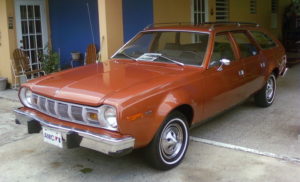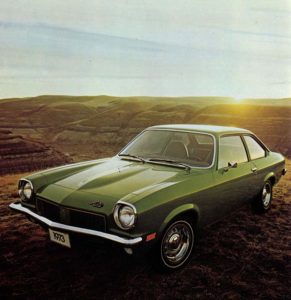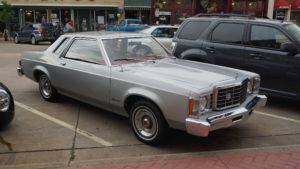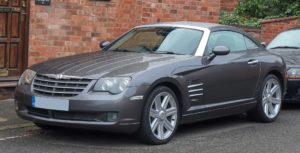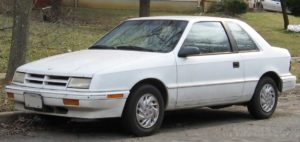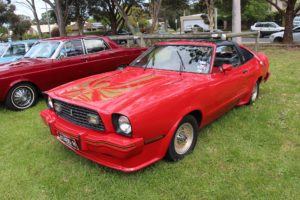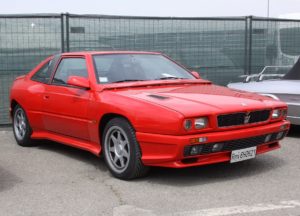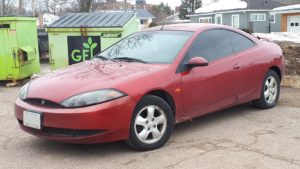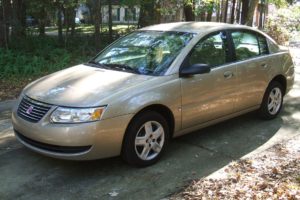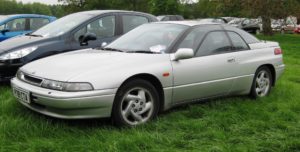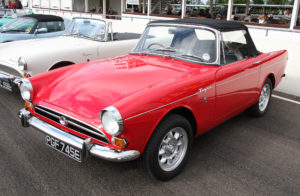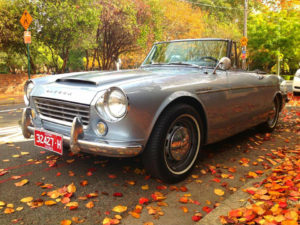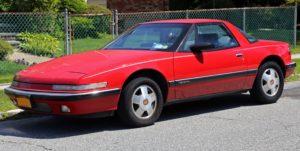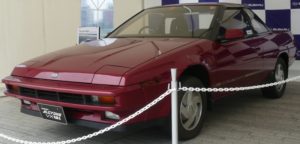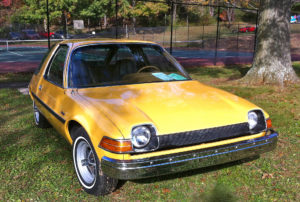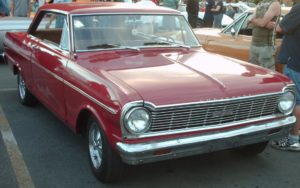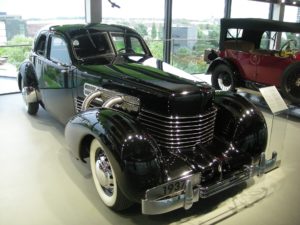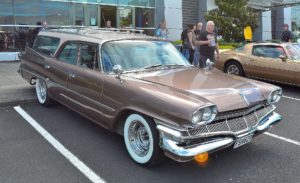Cars have been around for quite some time now and have been helping us get from one place to another in a much easier fashion. However, the cars that we knew back then are far more different than the cars that we’re using today. Invented in 1886, automobiles have changed a lot over the years and have been upgraded to suit the changing needs of humans. From the Chevrolet Camaro to the AMC Pacer, check out some of these iconic vintage cars that every car enthusiast still wishes were in production.
64. AMC Hornet
The 1970s was truly a great time for automobile manufacturer American Motors Corporation (AMC). During that decade, the car-maker, which was the smallest of the Big Four car manufacturers back then, made some of the most iconic cars of the ‘70s. One of them is the AMC Hornet. The Hornet was quite ahead of its time when it was first released to the public. Having a sleeker look and a smaller body compared to the bulkier cars Americans were used to before, the Hornet provided not just speed but also a classy look that would become the ancestor of other iconic cars such as the 1978 Concord and the AMC Eagle.
63. Ford Maverick
The 1970 Ford Maverick is one of the most underrated cars in history. Hailed as the 1970s equivalent of the Nissan Sentra, the Maverick has a more groovy look and feel, suitable to the style of the ‘70s era. Aside from its stylish look and reliability, the Ford Maverick was also fairly cheap compared to other cars of the same style during that time. It was truly one of the crowd favorites, but sadly, it was discontinued and forgotten over time.
62. Volkswagen 411
When it comes to great automobile reputation, car manufacturing giant Volkswagen takes the crown. As the company that gave the world the iconic and beloved Volkswagen Beetle, the company also has a variety of other cars that truly made a name in history. Due to the success of their Beetle cars, Volkswagen decided to take things up a notch and introduce a line of bigger luxury cars to the rest of the world. Thus, the Volkswagen 411 was born in 1971. However, this attempt wasn’t such a huge success due to the fact that the 411 wasn’t as fast as most Americans had hoped it would be. And so, the company discontinued it in 1974.
61. Ford Torino
While most car manufacturers only released one or two variations of different car models, Ford released a handful of versions of their Torino line of cars. From sporty muscular coupe, which was highly popularized in the TV show Starsky & Hutch, to wood-paneled sedans, Ford really invested on the variety of their cars. One of the most iconic ones is the very first version, the 1972 Ford Torino, which won the heart of the public thanks to its practical size and innovative style. Despite the company’s best efforts to keep the Torino line-up alive for decades to come, they stopped manufacturing it in 1977 and replaced it with the LTD II.

60. Pontiac Astre
Although the public will never forget the disastrous release of General Motor’s Chevrolet Vega, their 1973 Pontiac Astre was the complete opposite. Although it wasn’t such a huge failure as its predecessor, it failed to make a mark on the hearts and minds of automobile enthusiasts all over the world. Basically, the Pontiac Astre was just a rebadged and upgraded version of the Vega, but it was too expensive for anyone to purchase so it really didn’t bring in enough revenue to the company and was thus discontinued.
59. Oldsmobile Omega
To allow for product differentiation without designing or engineering a new model or brand, car companies created a process of applying a new badge or trademark to an existing product line which is known by many as badge-engineering. While this didn’t pose any problems at first, it did eventually reveal its disadvantages, specifically with the Oldsmobile Omega. The Omega was the rebadged version of the Chevrolet Nova. Everyone thought the Omega was a good upgrade from the Nova until it moved to a front-wheel-drive X-body platform which didn’t exactly live up to everyone’s expectations.
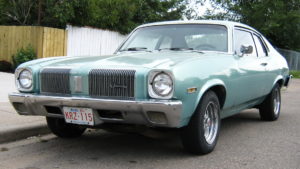 admin
admin
58. 1975 Ford Granada
If there’s any car that would be given an award for looking formal and so put together, it would have to be the 1975 Ford Granada. To this day, we have yet to see a worthy contender for the sleek look of the Ford Granada. Its appearance is probably the main reason why people have a hard time forgetting it. Many automobile enthusiasts are still attracted to the Granada despite seeing various modern cars out in the market. When the Granada was released, Ford managed to sell around 1.8 million units of the vehicle. This makes us wonder why it was ever taken out of the market.
57. Mercury Bobcat
The thing about badge-engineering is that it takes older versions of cars and gives them a subtle, often cosmetic upgrade, which instantly wows the general public. However, when Ford decided to rebadge their Pinto into the 1973 Mercury Bobcat, the people didn’t buy it and weren’t fooled by the minor upgrades the company decided to make. With its formal, upright grille and a boxier hood, Ford sold around 200,000 Bobcats only compared to the 1.3 million Pinto units they were able to sell. Due to this fact, it’s no surprise that the car manufacturer decided to discontinue the Bobcat production by 1980.
 admin
admin
56. Datsun 200SX
There was a time when Japanese car manufacturers took over the American market by storm in the ‘80s, but during the ‘70s, it was a whole different story. One of the most easily forgettable cars that Japanese automaker Datsun, now more commonly known as Nissan, whipped up was the Datsun 200SX. While some car collectors are drawn to this vehicle today, it was widely regarded as one of the most unattractive cars in the 1970s. The Japanese are known for their love of economy cars and sports cars, but the 200SX was neither. Then again, they learned from their mistakes and they soon launched a new and improved 200SX in 1980 which would later become a classic in the automobile world.
55. Buick Century
Innovating on styles that still work just fine is such a risky move, and you can bet that Chevrolet felt their mistake when they decided to release the 1978 Buick Century to the public. The whole world was still quite accustomed to the traditional notchback sedan, which is why the Buick Century aero backline of cars didn’t really fare well when it came to sales. In fact, it only sold fewer than 48,000 Century cars between 1978 and 1979. When they came up with the sedan version of it in 1980, sales went up to 130,000 only.
54. Ford Fairmont
The ‘70s can really be considered as a sort of European craze in the automobile industry of America. One of the most popular European-made cars of that time was the Ford Granada replacement, the Fairmont. While others would expect this to be a completely upgraded version of the Granada, the Fairmont turned out to be a more simplified version of the vehicle. There’s nothing wrong with making things a bit simpler for the driving population, which is why many consumers found the Fairmont a refreshing take to the oversized Granada line-up.
53. Dodge Magnum
Ford’s Thunderbird really impressed all kinds of car enthusiasts, which is why Chrysler made an attempt to release their own line-up of luxury vehicles in the form of the 1978 Dodge Magnum to compete with it. Its modernistic look was quite refreshing for many people, but what most of them weren’t aware of at first was that it was based on a mid-size platform first developed in the early 1960s. It was one of the last Chrysler passenger cars to offer a big-block engine, so this was a bit of a turn off for most people at that time, especially since fuel prices were increasing and they found the bulkiness of the Magnum’s engine to be too much for them.
 admin
admin
52. Buick Reatta
If you think touchscreen technology is a modern invention, then you might want to think again. Back in the ‘80s, one car was already making waves and turning heads thanks to its touchscreen interface. To say that the Buick Reatta was ahead of its time is an understatement. Having a touchscreen control center back then was such a futuristic idea that everyone was instantly amazed by this vehicle. Since the idea of a futuristic design was quite new, it had its pitfalls, and its glorious touchscreen controls were soon replaced with old-school physical controls. The Reatta was discontinued in 1991, but it sure paved the way for the hi-tech cars that we have today.
 admin
admin
51. Chrysler Crossfire
Although this automobile is fairly recent, first manufactured in 2004, the Chrysler Crossfire still deserves a spot on our list due to how sensational it seemed to be when it was first marketed to the public. Based on the Mercedes-Benz SLK roadster, the Crossfire was Chrysler's first two-door sports car since the retro-fab Prowler. While it was a decent car to drive, it wasn’t quite spacious and had poor rear visibility. Because not a lot of people were buying it, it was eventually discontinued in 2007.
50. Dodge Avenger
It’s not hard to see why the Dodge Avenger managed to catch the attention of many people. With its dashing sports car look, similar to the appearance of the iconic Chrysler Sebring, the two-door vehicle was quite spacious, unlike the sports car we’re all accustomed to. When it comes to speed, you can bet that the Avenger was a mighty contender, with a 2.0-liter four-cylinder engine and an optional 2.5-liter V-6. Sadly, the Avenger was later redesigned and renamed the Stratus coupe for marketing purposes, which was a bit of a letdown since “Avenger” sounded cooler.
49. Dodge Shadow and Plymouth Sundance
Although the Dodge Shadow and Plymouth Sundance were 3-door and 5-door hatchbacks first introduced in 1987 by Chrysler, a 2-door convertible variant was added to the Shadow lineup in 1991, which was taken quite well by car enthusiasts. Unlike their four-door siblings, the Shadow line-up had a turbocharged 2.2-liter inline-four and was heavily inspired by Chrysler's legendary slant-six engine. However, they were soon replaced by the original Dodge/Plymouth Neon's two-door variant, and the Shadow/Plymouth variant was completely discontinued by 1994.
48. Plymouth Laser/Eagle Talon
The Mitsubishi Eclipse truly made its mark in history, so it’s no surprise that its siblings, the Eagle Talon and Plymouth Laser, were also iconic in their own right. While they weren’t as popular as the Mitsubishi variant, both of them still packed a mighty punch having GSX's running gear. Together, these three cars represented the three points of the then-newly formed Diamond Star Motors (DSM), a joint venture between the Chrysler Corporation and the Mitsubishi Motors Corporation. The only difference among them was really just the trim and badging.
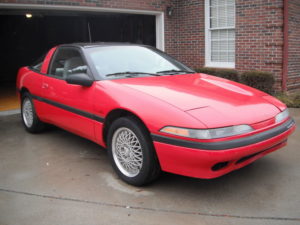 admin
admin
47. Ford EXP
Some car companies are able to redeem themselves when they release the second-generation version of a first-generation car that failed miserably. However, this wasn’t the case for the Ford EXP. Based on the '80s Ford Escort hatchback, the EXP, which was most noted for its frog-eye-looking headlights, didn’t bring in too much revenue due to the fact that it was quite overweight and underpowered. Hoping to get a second chance, the company scrapped the first design and released the second generation EXP which they called the Escort EXP. Sadly, it was too late for the car manufacturer and the model was discontinued after the 1988 model year.
 admin
admin
46. Ford Mustang II King Cobra
It was a good thing that the King Cobra was just a limited edition version of the Ford Mustang II because if it wasn’t, it wouldn’t have been able to survive the growing competition in the automobile industry. The only thing striking about this one-year-only special included a giant King Cobra sticker on its hood and its 302-cubic-inch V-8 that wheezed out about 130 horsepower. Then again, its most redeeming feature was perhaps the fact that it was the first Mustang to wear "5.0" badges which would later on become a central branding of the car.
45. Ford Tempo / Mercury Topaz
Not many cars had twins, which explains why the Ford Tempo and the Mercury Topaz were among the most unforgettable cars of the '80s and '90s American automotive market. Then again, many people, even Ford Motor Company, chose to forget about this creation due to the huge flaw in its design. It’s no surprise that it left such a stain on the reputation of Ford Motors since the Tempo and Topaz were based on the U.S.-market version of the Ford Escort, which was also another four-wheeled disaster. In the case of Tempo and Topaz, the designers managed to hide their bottom-feeder hatchback origins.
44. Ford Thunderbird Super Coupe
They say you should never judge a book by its cover, and apparently, you also shouldn’t judge a car based on how it looks. While the Ford Thunderbird Super Coupe looks like a car that would be driven by an 80-year-old man with blurry vision, it’s actually equipped with a 210-hp supercharged 3.8-liter V-6, which was upgraded to a 230-horsepower engine after a few years. It even rode on a four-corner independent suspension with electronically adjustable shocks. Add in the fact that it also had limited-slip diff and seats with power-adjustable bolsters and lumbar support, it’s no wonder why many people loved the S/C.
43. General Motors EV1
Nowadays, automobile manufacturers are racing against time to produce effective and easy-to-use electric vehicles, but back in the ‘90s, General Motors was already able to come up with one in the form of the EV1. At first glance, its shape looks, unlike any other car. That’s because it is unlike any other car during that time. It had an aluminum frame, plastic body panels, and lightweight magnesium wheels, seat frames, and steering-wheel core. Before it was able to make a global impact though, and before other car companies even had the chance to improve on its technology, GM decided to discontinue it, much to the dismay of environmentalists.
42. Hyundai Tiburon
Named after the Spanish word for shark, the Hyundai Tiburon really looked similar to the shape of the aquatic animal. The front-drive sports car looked like a car of the future, but it only lasted for two generations before being replaced by the Hyundai Veloster hatchback. The Tiby, as others would call it, was the inspiration for many Fast and Furious–inspired vehicles. After laying low for quite some time, it eventually made a comeback in 2003 and was made to be more affordable for its fans.
41. Kia Forte Koup
We wouldn’t wonder if cars manufactured back in the ‘70s, ‘80s, ‘90s would be easily forgotten by the public, but it’s hard to imagine how a car that was first introduced in 2010 would be forgotten that easily. That’s because Kia only sold a handful of their Forte Koup cars that not many people can easily recall ever being in the market. Although the Koup looked a lot similar to its sedan sibling, it still didn’t manage to perform well in the automotive industry. After refreshing its look, it still wasn’t able to make an impact, forcing the company to discontinue its production.
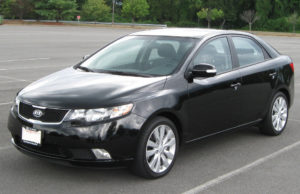 admin
admin
40. Lincoln Mark VIII
If there’s one thing we learned through the years, it’s that cars don’t need to look futuristic to be worthy of being futuristic, and that is something that Ford’s Lincoln arm was able to fully understand when they released the Lincoln Mark VIII. Although it looked just like any other car in 1993, it was actually equipped with a host of new technologies such as four-wheel anti-lock disc brakes, computer-controlled air springs, and the first dual-overhead-cam (DOHC) version of Ford's modular aluminum V-8 engine. By 1997, Ford decided to reflect the car’s futuristic technology in its physical appearance by giving it some xenon headlights and a full-width neon taillight bar. Even though it seemed like it had the whole package, it didn’t sell as much as the company projected it.
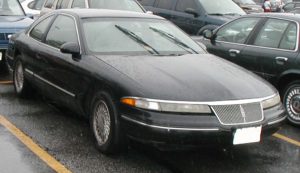 Wikimedia OLYMPUS DIGITAL CAMERA
Wikimedia OLYMPUS DIGITAL CAMERA
39. Maserati Shamal
While Maserati’s Shipal cars were quite impressive, featuring a shorter wheelbase than the Biturbo; boxed fender flares; a weird black-colored B-pillar that was actually an integrated roll bar; and an over-wrought body kit that included a spoiler at the base of the windshield, the company only managed to produce 369 units, which is probably why everyone easily forgot about this model. Add to that the fact that the Shamal didn’t even get the chance to make it to the US, it’s easy to see how this model was easily buried at the back of everyone else’s mind.
38. Mazda 626 Coupe
They say that if something isn’t broke, there’s no need to fix it, which is why in the case of the Mazda 626 Coupe, it became easily forgettable due to the countless updates it received despite working perfectly in the first place. Introduced in 1978, the Mazda model started out as a front-engine, rear-drive compact coupe that had a unique look. A 1981 update gave the 626 a more contemporary exterior appearance. After another year and a full redesign, the 626 went mainstream with a front-wheel drive and a generic exterior. It didn't leave much of an impression until a few years after it was renamed the MX-6.
37. Mercury Cougar
By 2010, the Mercury brand completely disappeared from Ford, but before that, it gave rise to the Cougar. After eighth generations of constant upgrades, the Cougar eventually became the car manufacturer’s first-ever model to have front-wheel drive. Introduced in 1999, this short-lived eighth-generation version was a far cry from its other predecessors. It was originally intended to be the replacement for the sporty Ford Probe, but Ford made other plans for the vehicle which easily made it an easily forgettable model.
36. Mercury LN7
No, you’re not experiencing deja vu. Also part of our list is the Mercury LN7, which is pretty much the same car as the Ford EXP. However, they do have their differences, which is why we chose to keep them separate. Back in the day, Ford had a habit of making identical cars with very subtle differences, and the 1982 LN7 was also one of them. The only difference this model had with the EXP was its "bubble-back" hatchback rear, slightly altered grille, and uncharacteristically stylish phone-dial wheels. Ford also made a few convertible models of it, but it was eventually discontinued in 1984.
 admin
admin
35. Mini Cooper Coupe
You’d either love it or hate it, but the Mini Cooper Coupe didn’t quite live to everyone’s expectations when it was out in the market. Eight years after it was first introduced, some are still wondering why this car model was even released in the first place. Sure, it looked cute, but it could barely fit anyone inside it. Although it was classified as a hatchback, it hardly had any space inside and was much more expensive to manufacture compared to other Mini models. Fewer than 8000 units were sold in the United States.
34. Nissan Altima Coupe
When Nissan first released the third-generation Altima sedan, they thought of releasing a coupe variant to build on the sedan’s sporty image. Unsurprisingly, the two-door variant of this model looked sleeker and smaller. Yet, it packed a mean punch with a 2.5-liter four-cylinder as the base engine and a powerful 3.5-liter V-6 available as an upgrade. It was a very promising car that could have been everyone’s favorite, but Nissan only put it in production for a single generation.
33. Nissan NX2000
Strolling down a Nissan NX2000 back in the ‘90s gave one an instant boost in confidence and upped their charm by up to 70%. Who could blame them since the NX2000 was such a hot ride? This Nissan combined the mechanical features of the Sentra SE-R is an oddly attractive car. While it was a bit small compared to other coupes, the NX2000 was quite fast and ran smoothly. Compared with the Geo Storm GSi and the Mazda MX-3, the NX2000 is able to run 60 mph in just 6.9 seconds and topped out at 134 mph.
32. Rolls-Royce Camargue
Back in the day, people would definitely not have the Rolls-Royce Camargue as their first choice of car, but today, it is considered a classic. Some would say it didn’t look quite appealing but to each their own. It was a massive two-door luxury coupe when it was first released, and it was the most expensive production car in the world, and it got more expensive as time went on. Its $65,520 MSRP ballooned to more than $171,000 by the end of the Camargue's 11-year production run, during which only 531 units were built. Then again, it had a lot of firsts: It was the first Rolls-Royce to be designed in metric dimensions and the first Rolls to have a slanted grille; it was also the first production car with automatic dual-zone climate control.
 admin
admin
31. Saturn Ion Quad Coupe
In an attempt to bring something new to the table car manufacturers kept on releasing several weird, clamshell four-door vehicles during the early 2000s. These vehicles were oddly hinged at the back, and these included models such as the Honda Element, the Mazda RX-8 sports car, and the Saturn Ion Quad Coupe. Like its predecessors, the Ion had plastic body panels with its interiors made out of plastic. Still, despite its vintage look, it still hasn’t managed to gain a lot of fans even after it was discontinued.
30. Subaru SVX
The first time Subaru SVX landed on America’s shores in 1991, people simply couldn’t get over it. You’d notice this car being used in a lot of Hollywood films, and it’s not hard to see why. Unlike sedans and wagons, the SVX looked out of this world, but in a good kind of way. Its glassy turret-top, fitted with weird half-windows that retracted at least partly into the doors, was like a jet fighter's canopy. It also had a 230-hp 3.3-liter flat-six engine combined with a four-speed automatic and all-wheel drive. It was a strong car that brought a lot of revenue for Subaru.
29. Toyota Paseo
During the ‘90s, Toyota came up with the idea of combining the style of sports cars with the efficiency and affordability of economy cars. Thus, the Toyota Paseo was born. It was only one among the company’s newly produced cars of the same style during that time. However, what Toyota overlooked was that the Paseo lacked the power people were looking for in a car due to the fact that it only had a tiny four-cylinder engine with around 100 measly horsepower.
28. Volvo 780 Bertone
While Volvo’s 262C Bertone was designed in-house but assembled by Bertone, the 780 was both styled and built by Bertone itself. It was quite a huge upgrade from the 262C both internally and externally. It was aesthetically put together, which is why many people can still recall this model being out in the market at one point in time. The 780 was based on Volvo's 700-series sedans and wagons, but every single body panel was unique to the coupe. Then again, no matter how good it looked, people still forgot about it. It still has quite a few fans today though.
27. Porsche 914
Porsche is always a winner when it comes to manufacturing new cars, and the 914 is among the most popular ones. When It was first released, people were surprised by how inexpensive it was. With a centrally-mounted engine, high power, and a Targa top, the 914 was worth around $15,000 back in the day, a cheap comparison to other models that were worth $50,000 or more. However, Porsche is more recognized for its line of expensive vehicles, so they discontinued the production of the 914 and went on to produce its usual line-up.
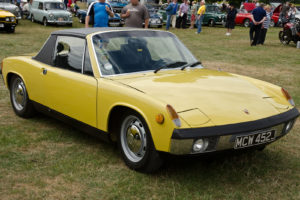 Wikimedia Porsche 914 (1970)
Wikimedia Porsche 914 (1970)
26. Sunbeam Alpine and Tiger
The Sunbeam Alpine and Tiger made it possible for drivers to enjoy open-air driving back in the day. However, it did have quite a hefty price tag, but they were still quite popular despite that. Although the Alpine was quite loved, it was still forgettable, probably because it wasn’t as spacious as other classic roadsters. Built from 1959 to 1968, the Sunbeam was small and was equipped with a 1.5 or 1.7-liter four-cylinder. Sunbeam built over 60,000 Alpine roadsters, so finding one isn’t a problem. When it was discontinued though, people easily forgot about it.
25. Ferrari Mondial
We all know that Ferrari is one of the most popular car brands in the world despite its expensive vehicles. It is so well-loved and famous that it managed to gain a lot of fans all over the world. Then again, the company has a few rare gems, which translates to cheap yet of good quality. To date, its most affordable unit is the compact Mondial four-seater. First introduced in 1980, Ferrari built around 6000 units of this until 1993. For 13 years, the Mondial was Ferrari’s entry model, which meant it was small, and not as powerful as its other models. Still, it was a Ferrari, and people look cool in one no matter what happens.
 admin
admin
24. Studebaker Lark
Before Toyota, Ferrari, or Porsche, there was a time when Studebaker was one of the biggest car companies in America. What made it more impressive was the fact that it was an independent car company, yet it was able to create a vehicle that was as good as the Lark. Sadly, things changed after the second world war, and other players went on the scene. Before all that, the Lark was one of its most interesting models, being compact, cute, and stylish, a refreshing take on what was currently happening around the world back then. Today, the Stude is long forgotten.
23. Alvis TD 21
Most people aspire to own expensive luxury cars such as Bentleys, Aston Martins, and Jaguars. Unfortunately, not all of them can afford them. Thankfully, the Alvis TD 21 existed at one point in time and became a cheap option for the people who wanted to have a luxurious ride for a cheaper price tag. Back in the day, the Alvis, which was a British car manufacturer, was quite active in the automotive industry. Sadly, it failed to keep up with the newcomers in the automobile world by the late ‘60s, and they were forced to close their doors in 1967. Along with it, the Alvis TD 21 was discontinued and forgotten through time.
22. Lamborghini Jalpa
It’s no secret that Lamborghinis are quite expensive, with only a few of them priced at less than a million dollars. However, the Jalpa was different. Not only was it a legitimate model made by the company, but it also had its signature look for a fraction of the price. Named after a breed of fighting bulls, the Jalpa was Lamborghini’s entry-level model, which they produced from 1981 to 1988. However, the Countach outshined Jalpa, which is why the company chose to discontinue its production.
21. Datsun Fairlady Roadster
Before Toyota, many Japanese manufacturers started as downsized copies of European and American cars. Despite this strategy, Japanese cars became a big hit, and they eventually were able to come up with their one concept. But before that, one of the most successful copies they were able to come up with was the Datsun Fairlady Roadster, which was borrowed from the design of European cars like Triumph and MG. To switch things up though, they gave the Roadster a 2.0-liter engine, updated handling, and improved driving dynamics. When the Z 240 came into the scene though, the Roadster became history.
20. Volkswagen Scirocco
No matter what happens, there’s bound to be a more inexpensive substitute for the car you’re eyeing. For fans of the MK1 Golf GTI who couldn’t afford its heavy price tag, they settled for the cheaper Volkswagen Scirocco instead. It was basically a similar vehicle, except for the fact that it had a lower roofline and a wedge shape. Many people loved this particular model simply because it looked even better than the Golf. Then again, when it was discontinued, many people still forgot this ever existed.
19. Ford Falcon
When Ford introduced the Falcon in 1960, it became an instant hit. It was Ford`s first compact model, which explains why it became one of its bestsellers. It had a modern-looking body and a wide selection of economical six-cylinder engines, and yet it was still cheaper than other cars at that time. Despite its low price, it was of good quality and a lot of people bought it, bringing in a lot of revenue for Ford. After some time, Ford introduced more powerful versions, V8 engines, and a convertible body style, which made the Falcon even more popular and interesting. This is why we can’t believe people forgot about it after it was discontinued in 1970.
 admin
admin
18. Oldsmobile Toronado
Not many people may remember the classic Oldsmobile Toronado, but back in the ‘60s, this car was everywhere. Back then, the car manufacturer became known for their inventive technology, style, and luxury thanks to the Toronado. It was such a large and powerful vehicle with front-wheel drive, which was quite unique during those years. To make it more attractive to potential buyers, the company decided to design it with a low roof and hidden headlights. They also threw in a big block 455 V8 with 385 HP. Naturally, the car became a big hit! Sadly, Oldsmobile discontinued its production, and people forgot about how great this car once was.
 admin
admin
17. Chevrolet Corvette C4
Have you ever seen those depictions of classic ‘80s cars that looked cool enough to be driven by a celebrity? Chances are, you’ve seen the Chevrolet Corvette C4 on those depictions. With a wedge-shaped body, pop-up headlights, a rear hatch, and bright colors, this car is a pop culture icon. Not only is this model quite the looker, but it also saved the Corvette from an early demise due to the recession and lack of popularity back in the day. At first, people didn’t take this car seriously, but after some time, everyone loved it, and Chevrolet turned it into a world-class sports car.
 admin
admin
16. BMW E21 3-Series
The crowning jewel of BMW is its 2002 or E30 generation of the 3-Series. Then again, people fail to remember that the car manufacturer produced the first modern 3-Series model in production from 1975 to 1983. More commonly known as the E21, this BMW model had it all! It was also one of the cheapest cars back in the ‘70s, so you’d understand why this was so popular back in the day. Not only was it affordable, but it was also lightweight and had a sporty look to it. According to those who got the chance to drive it, the car ran smoothly with its rev-happy six-cylinder engines and rear-wheel drive.
15. Buick Reatta
It seems like everybody forgot about the sleek Buick Reatta. Presented in the late ’80s, Buick designed it as their halo car. It was a cool-looking two-seater coupe or convertible built on a shortened GM E platform. Under the hood was a 3.8-liter V6 with independent suspension and disc brakes all around.
All Reattas were highly optioned cars, too. And, despite dating from the late ’80s, it featured board computers and lots of modern electronic systems. The production lasted four years and they built over 21,000 of them. Truly, a neat-looking car no matter the decade.
14. Cadillac Allante
Cadillac envisioned the Allante as a competitor to the Mercedes SL convertible. The two-seater luxury convertible was created by the Italian company, Pininfarina. It came with a Northstar V8 engine and front-wheel drive. That was quite an unusual combination, but the car looked and performed quite well.
The production process was specific because the actual fabrication happened in Italy in the Pininfarina factory. The vehicles were then shipped to the U.S. by jet, which affected the cost of the final product. The Allante stayed in production until 1993 and they built only over 21,000 units as the car proved too expensive to produce. Allegedly, the factory didn’t get the returns on every Allante they made. If you owned or currently enjoying this car, you’re one of the lucky ones!
 admin
admin
13. Toyota Celica Supra
Everybody pines after those Mk 4 Supras from the early ‘90s. What people forgot was the first model from the series, the Celica Supra. For those customers who found the standard Celica not agile or powerful enough, Toyota introduced the 1978 model year Celica Supra. It came with a cool-looking hatchback body style and six-cylinder engine powering the rear wheels. The base engine for the Celica Supra was a 2.5 liter straight six with 110 HP. Just well enough for those who like great engine balancing on a compact design.
For those who wanted more power, the 3.0-liter with 116 HP was also available. Despite the fact it was nothing special in terms of output, the Celica Supra had sharp handling. It’s also customizable with the optional limited-slip differential, which helped with drifting and spirited driving. The model was quite a hit, so the Supra later evolved into a separate model.
12. Mercury Capri
Over the years, Mercury sold numerous models under the Capri name. Initially, it was a trim level on a regular Mercury sedan before being re-badged by Ford Capri from Europe. In the late ’70s and early ’80s, it was the Mercury version of the Fox-bodied Mustang. It was in 1991 that it became a totally new and separate model.
They assembled the 1991 to 1994 Mercury Capri in Australia on a Mazda 323 base and sold it in the U.S. This cool-looking two-seater roadster had a 1.6-liter engine and front-wheel drive. Despite being a decent car in all aspects, it failed to gain significant popularity, so Mercury withdrew it from the market in 1994. A short-lived but memorable vehicle for those who could remember it.
11. Mitsubishi Starion
The Mitsubishi Starion is an obscure JDM legend from the early ’80s. It featured a turbocharged engine, crisp period styling, and mandatory pop-up lights. With its rear-wheel drive and composed handling, it was Mitsubishi’s answer to the Mazda RX7 and Nissan 300 ZX.
Buyers could choose between 2.0 and 2.6-liter engines, both with the same power level, but the 2.6-liter had much more torque. On the American market, they also sold the Starion as the Chrysler Conquest. While it has the remarkable features of a sports car, the Starion only had a short life-span. The Mitsubishi model whose name derived from the star of Arion ended its run in 1989.
 Wikimedia
Wikimedia
10. Subaru XT
The Subaru XT is an ’80s legend destined to be a classic, but most car enthusiasts oddly forgot about it. With a coupe body, pop-up headlights, digital dashboard, and optional all-wheel drive, the XT was a capable, modern car for its time.
Production started in 1985 and stopped in 1991. Buyers at the time loved its angular wedge design and features, so it’s no surprise for the vehicle to be received with praise. The best XTs come with the 2.7-liter flat-six engine and the signature Subaru all-wheel-drive system.
9. AMC Pacer
The Pacer is a car that people equally love and hate, making it quite recognizable and legendary in its own right. It was AMC’s effort to produce a compact car. However, it turned out to be less compact than its competitors, and it came with numerous flaws. What’s not to be forgotten though was its design that revolved around its charm, making it one of the most quirky and iconic ’70s legends, auto-wise.
It’s still around with currently low prices, but most people have forgotten about it. If you like the Pacer, you can find them affordable, but don’t expect great performance from it as it is not what the car is all about.
8. Acura Integra
Used to help launch Honda's new upscale Acura brand, the Integra was a well-respected, affordable sports car that was produced from the mid-1980s to the mid-aughts. Its demise, like those of many other similar coupes, was due to market demand, not performance or safety issues. It was the successor to Honda Quaint and was meant to be a more comfortable but edgy version of the Civic.
The Acura Integra was quite popular, attributing to its finesse and accessible design. It was featured in mainstream media. You can spot it in the film The Fast and the Furious where two of the main characters are driving each of their own models. It was also featured in the 2003 video game Need for Speed: Underground, so if you can’t find the car now, you can drive it virtually.
7. AMC Eagle
The unique AMC Eagle merged the convenience of a compact sedan with the capabilities of a four-wheeler vehicle. At the time of its release in 1979, it was the only 4WD passenger car, and its off-road capabilities matched that of a Jeep or other smaller four-wheel drive automobile.
Its conception was based on AMC’s anticipation that people would love the off-road capabilities of a utility vehicle on a compact and opulent vehicle, and the company was right. The AMC Eagle was embraced quickly by consumers and it even spawned numerous ProRally Series versions. Critics had called the AMC Eagle as a vehicle that is “ahead of its time”.
6. Austin-Healey 3000
The gorgeous Austin-Healey 3000 was a British sports car sold for almost a decade, with the first model released in 1959. A winning road racer in their prime, these classic cars remain popular with collectors today. Its base was produced by Jensen Motors and the rest of the vehicle was assembled by BMC’s MG. In its heyday, the Austin-Healey was such a fan favorite that it even earned the nickname “big Healey” due to its robust and pulpy size. It actually was converted from an open sports car to a convertible during its time that’s why you can see different editions of the model, but whatever fits your taste, the Austin-Healey is a remarkable sports car.
Its production ended in 1967 as the BMC wanted a refurbish, with the same engine but with a different unibody.
5. Chevy Nova
Produced between 1968 and 1979 and then again between 1983 and 1985, the Chevy Nova was one of the most popular compact pony cars on the road, at least in its earlier iterations. The 1980s models were considerably less powerful than their predecessors. Many had pointed out that the ones made between 1868 to 1979 are very top of the line, thanks to their two-door features and the powerful V8 engines.
It was rumored that the Chevy Nova didn’t do well in many Spanish-speaking countries as its name translates to “not going”. This was a false claim as the Chevy Nova was very sought after in South American countries. This story shouldn’t stop you from acquiring a Chevy Nova as the vehicle definitely goes, and up it goes.
4. Cord 812
Though today both the Cord 812 luxury touring car and the Cord Automobile company itself are largely forgotten, the stunning 812, with its long hood, sloping wheel covers, and a gorgeous cabin was perfectly representative of the tastes of the Gangster Era of the 1930s. If you want to trot around downtown, feeling very regal then the Cord 812 is for you. Its extravagance, however, was the cause of its decline as people started to opt for slimmer and easy-use vehicles.
It doesn’t matter, though, as you can still own your Cord 812. It’s still popular as a collectible that even celebrities like Jay Leno have the car and are obviously proud of it.
3. Datsun 510
The Datsun 510 was a small and lightweight vehicle that is ideal for nimble drivers and hassle-free driving. While hardly a luxury car inside or out, its looks were elegantly simple and its low price and ease of repair made it quite desirable among cost-conscious consumers. Sadly, Nissan discontinued the Datsun in 1986 but re-released it in 2013, with a more rotund appearance but the same convenient features.
Did you know that Datsun 510 was primarily responsible for Nissan’s worldwide recognition? Due to the vehicle’s ease of use and attractiveness to young professionals and modest-earning families, Nissan became a to-go vehicle brand.
 admin
admin
2. Dodge Dart
The first car called a Dodge Dart was sold throughout the 1960s and well into the 70s — the original Darts were reliable, affordable, and came in hot rod models popular with auto enthusiasts. It had a wheelbase of 118 inches in a 210.5 inches body on its initial release then became a mid-size car to a compact vehicle over the years.
Dodge revived the name for a more compact sedan released in 2012, but the later model never caught on and was produced for just half a decade.
1. Cadillac Coupe DeVille
This big, beautiful vehicle was produced for nearly half a century, with the first iconic Cadillac DeVille land yacht-style cars sold in 1958. For its initial version, it was a two-door pillarless vehicle as it was a trim level from early Deville releases. It’s very distinctive during its time. Many liked the flashy tailfins accompanied by bullet taillights. Of course, apart from aesthetics, the Cadillac DeVille was also packed with 325 horsepower, 6.4 liter engine, and an automatic transmission.
After a number of changes, the model remained in production until 2005. It was then converted to the Cadillac DTS, a luxury sedan that lasted until 2011. If you like to navigate the roads looking luxurious and stylish, the Cadillac Deville is the vehicle of choice.
 Wikimedia
Wikimedia



